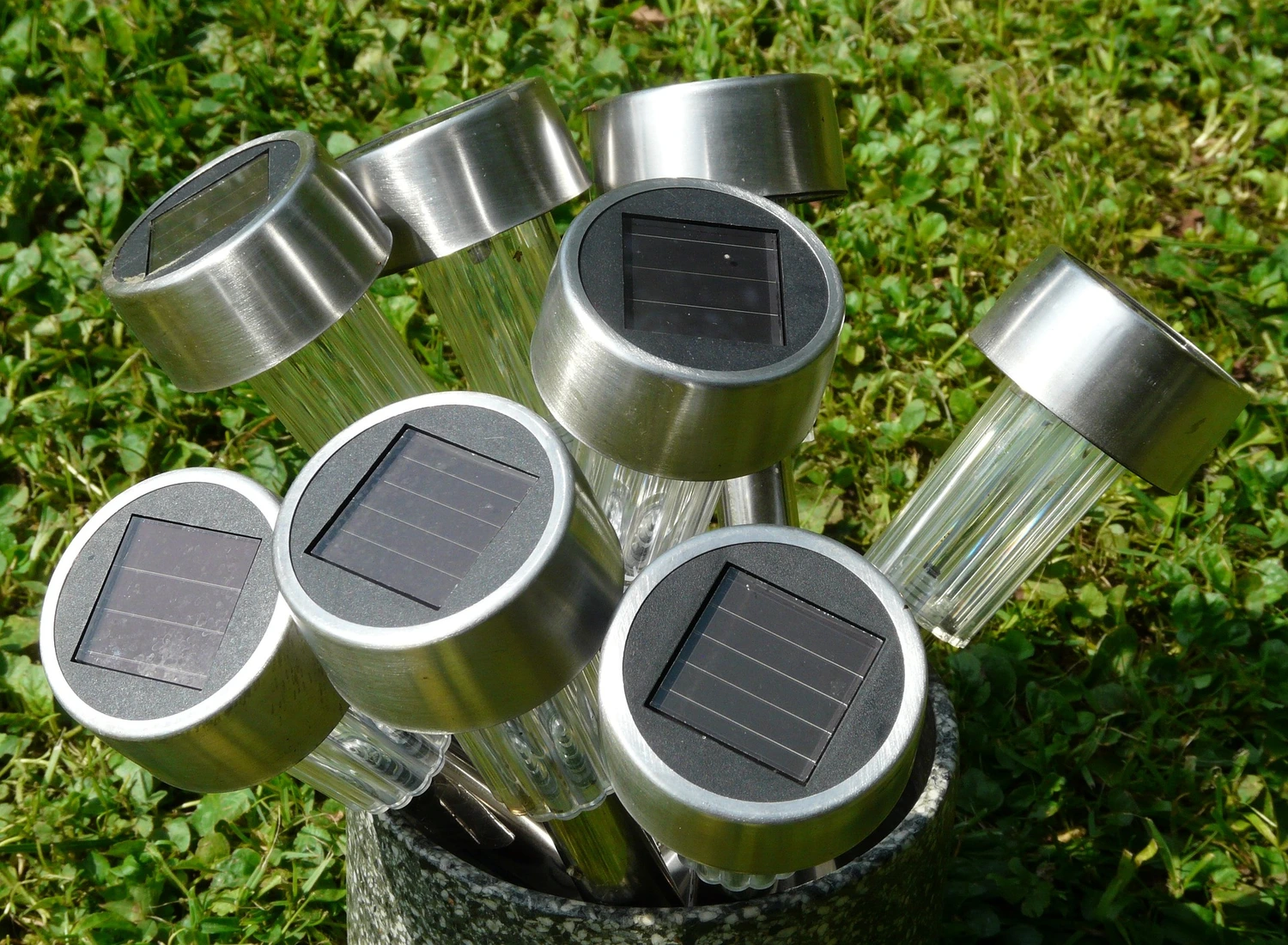Do you need information on how to install solar streetlights? Then, read through this article to get the details you need.
The details in this article show how to install solar streetlights and give information on what a solar streetlight is, how it works, and other basic information.
For clarity’s sake, I will begin this article with an overview of solar streetlights. Then, you will see how solar streetlights work in the next section.
Furthermore, the next section will contain the types of solar streetlights. The pros and cons of solar streetlights will follow this.
Subsequently, the next section will contain the factors you need to consider before installing solar streetlights in a particular area.
Then, I will explain the step-by-step procedures you must follow to install a split-type solar streetlight and an all-in-one solar streetlight.
After that, I will provide answers to some frequently asked questions on how to install solar streetlights. Then, I will conclude with my final thoughts.
How To Install Solar Streetlights: Overview

Streetlights are lighting systems that provide illumination to paths, walkways, etc. at night. They are essential, especially in cities where people still do certain activities at night.
Also, you can define a streetlight as a pole-raised source of light on the edge of a road or a path. They are similar to the lights found on a railway platform.
However, you can install streetlights in your home to illuminate the outdoors, in public places, on the streets, etc.
Many of these lamps have light-sensitive photocells that activate the lamp when there is a need. These include when there is little or no ambient light, like dusk, dawn, or the onset of dark conditions.
A solar street light is a lighting system that operates with electrical energy stored in a battery. This system functions at night after the battery has been charged through the energy from the sun during the day.
Even so, solar streetlights are an environmental-friendly, economical, and smart lighting solution that helps deliver a favorable living environment with reduced energy costs and operation.
Despite its high cost of installation, some countries around the globe have already converted traditional streetlights to LED streetlights which have proven to be beneficial.
How To Install Solar Streetlights: How Does It work

Solar streetlights consist of 4 parts: a solar panel, battery, LED lamp, and pole. These parts play vital roles in solar streetlights.
Pole
To begin with, the pole is a metal structure that carries the solar panel and the lighting fixture. Next, engineers mount the pole on a concrete foundation to make it firm.
Hence, it is necessary that you use strong poles for all streetlights, especially for solar streetlights that it carries solar panels along with LED lamps and sometimes the battery.
However, newer designs of solar streetlights have PV panels and all electronics, including the battery, integrated into the pole itself.
Solar Panel
The solar panel is a photovoltaic panel that converts the energy from the sun into electrical energy in the form of a direct current (DC). It consists of photovoltaic cells connected.
Each photovoltaic cell consists of two silicon semiconductor materials sandwiched together, with an N-type semiconductor at the top and a P-type semiconductor at the bottom.
As a result, the two layers create an electrostatic field at the junction.
When the particles of sunlight rest on the solar panel, it displaces electrons that flow to the output of the cell. The continuous flow of these electrons results in the direct current (DC) electricity from the solar panel.
Furthermore, this electricity charges the battery during the day through a charge controller. The energy stored in the battery powers the LED lamps at night.
The two types of solar panels commonly used in solar streetlights are monocrystalline and polycrystalline solar panels. However, monocrystalline solar panels have a higher conversion rate than polycrystalline solar panels.
Solar Charge Controller
A solar charge controller is an electronic device that regulates the voltage from the solar panel.
Battery
A battery is an electrochemical device that converts chemical energy to electrical energy. It could either be a non-rechargeable or rechargeable battery.
Solar streetlights use rechargeable batteries. Thus, they can be used repeatedly, over and over again.
This is because a rechargeable battery does not just convert chemical energy to electrical energy. Instead, it converts electrical energy to chemical energy during the charging process.
In other words, a rechargeable battery converts chemical energy to electricity when discharging and the reverse during the charging process. The energy stored by the battery while charging during the day is used to power the LED lamp at night.
LED Lamp
The LED lamp is the lighting system in solar streetlights. This LED lamp illuminates only at night.
At night, the voltage drops below 5V, which signals the battery to supply electricity to the LED lamp. However, during the day, the voltage rises above 5V and cuts off the supply from the battery to the LED lamp.
Some LED lamps have motion sensors that sense movement and increase the lamp’s brightness, and dimes it when it does not detect motion.
How To Install Solar Streetlights: Types
Solar streetlights are of two types: the split type and the all-in-one type.
Split Type Solar Street Lights
The split-type solar streetlights come with their parts as separate units that are assembled with screws or bolts and nuts during installation. Hence, it takes a longer time to install a split-type solar streetlight.
Even so, split-type solar streetlights are more expensive, costing about 60% more than integrated solar streetlights. Also, it is more challenging to maintain a split-type solar streetlight.
Furthermore, split-type solar streetlights use lead acid batteries, which are inferior to the lithium battery the all-in-one type uses. Therefore, you need to bury the battery of a split-type solar streetlight and secure it with concrete during installation to avoid theft.
All-in-one Solar Streetlights
The all-in-one solar streetlights are new models of streetlights that integrates all their parts into one unit. Thus, installing an all-in-one solar streetlight takes a shorter duration than a split-type streetlight.
Furthermore, all-in-one solar streetlights use lithium batteries, which are more efficient than lead-acid batteries in split-type solar panels. Also, lithium batteries have almost 100% efficiency in charging and discharging.
The level A standard lithium battery used for the solar LED lamp has about 5 times longer lifespan than lead-acid batteries and also has depth charging protection. This increases the lifespan of the battery.
In addition, all-in-one solar streetlights are less expensive than split-type solar streetlights. Even so, it is easier to maintain.
Pros And Cons Of Solar Streetlights
Pros
- Solar streetlights do not depend on the utility grid, which reduces their operation cost.
- Also, they require less maintenance compared to conventional streetlights.
- It minimizes the risk of accidents since external wires are eliminated.
- Even so, electricity from solar panels is non-pollutive.
- It saves energy costs.
- Lastly, you can easily transport its separate parts.
Cons
- The initial investment cost is high.
- Also, the risk is theft is higher as equipment costs are high.
- Snow or dust can reduce or stop energy production if they accumulate on the horizontal panels.
Factors To Consider Before Installing A Solar Streetlight

Before installing a solar streetlight, these are the factors you need to consider.
Access To Sunlight
One of the important factors you should consider when installing a solar streetlight in a particular spot is the amount of sunlight that reaches the spot during the day.
For a solar panel to charge the battery properly, it should receive enough radiation from the sun.
Hence, you need to ensure that the area you want to illuminate with solar streetlights is free of any shade. In addition, you need to prune the branches of trees in the location to reduce the shade.
However, if you can not remove the shade, you can move a little from that spot so that you can get enough sunlight.
Activities In The Area
How point you need to note is how active the area is at night. If the area is active throughout the night, you need to install a solar streetlight that stays from dusk to dawn.
The solar streetlight should also have a battery with a higher capacity to light up for a long duration. Preferably, you should use an all-in-one solar streetlight without motion sensors in a busy area.
However, motion sensors and adaptive lighting techniques in modern solar streetlights help save more energy and can be useful on public streets that are less active or private residential properties.
Even so, using solar streetlights with adaptive lighting techniques significantly reduces the overall cost of the solar project.
The choice of the number of streetlights you need depends on the overall size of the area, and your choice of lumens and watts of the LED lamp and panels determines the brightness of the area.
Lighting Requirements
The lighting requirements differ according to the area where the solar streetlight is used. You can use a solar streetlight for public or private needs.
More so, the area in which you use the solar streetlight determines how strong the LED lamp should be.
Hence, you need to check the size and space of the area before installing solar streetlights.
For public roadway lighting or park lighting, you need multiple lights, and you must place them 10 to 15 meters apart from each other.
If there are obstructions like buildings or trees, you will need to increase the density for better lighting.
In a private property, solar streetlights add beauty to the landscape or light-up dark corners of the property.
Distance And Height
As mentioned earlier, the distance between two solar streetlights should be 10 to 15 meters. This distance applies to all public areas.
However, the height of the pole depends on the area of application.
For example, the height of the pole should be 8 to 9 meters on a main street, 4 to 5 meters for park and pathway lighting, and 15 to 20 meters for stadiums.
In addition, the default height of a pole may not be suitable in all areas. You may have to arrange for the panel to be raised to avoid obstruction from the trees’ shades.
In windy areas, you will need specialized poles to withstand the force of the wind.
Even so, you can discuss your unique requirements with your dealer while purchasing the lights.
Lighting Time And Brightness
The lighting time and the brightness of the light are also points to note. In urban areas that are active throughout the night, you will need a solar streetlight with strong intensity.
In rural areas, there is little activity at night. Hence, they do not require much illumination at night.
Therefore, you can use solar streetlights with motion sensors or lights that dim the brightness after a certain period to save energy.
These lights with motion sensors help to save energy and are used in private properties or paths that are not very busy.
However, lights with motion sensors light up at 100% brightness when they detect nearby movement and dim down to 20% brightness if they do not detect any activity.
In addition, integrated solar streetlights without motion sensors work at 100% brightness for the first four hours of the night and dim to 20% to 30% brightness for the rest of the night.
How To Install Solar Streetlights: Procedures
These are the step-by-step procedures you need to follow to install a solar streetlight. However, I will be considering the all-in-one and split-type solar streetlights independently.
Split-Type Solar Streetlight
The split-type solar streetlight has parts as different units, which you must couple together during installation. These parts are the main pole, the lamp arm, the LED lamp, the solar panel, the solar panel bracket, the battery, the battery box, and the installation cage.
To install a split-type solar streetlight, you need to follow the steps below:
Step 1
The first thing you should do is prepare a 1 m3 square hole with an additional space to store the solar battery on the ground. The battery hole should be approximately 60cm deep.
Place the installation cage inside the 1m3 square hole.
Step 2
After this, pass the battery cable through the flexible PVC tube, and insert the battery cable and the flexible PVC into the inner battery box. Then, place the battery inside the inner waterproof battery box.
Now, connect the battery cables to the battery terminals. The red cable goes to the red terminal (anode), and the black cable goes to the black terminal (cathode).
Then, place the waterproof cycle on the battery box and hold it with the screws. Next, cover the battery and tighten the nuts.
Step 3
Place the battery box inside the 60-cm-deep hole and pass the PVC tube with the wire through the circular opening on the installation cage. Ensure to tighten the screw on the PVC tube to fit with the battery box.
Then, fill the hole with concrete to cover the battery box entirely. Also, fill the 1m3 hole with concrete, ensuring that the protruding bolts and part of the PVC tube are at the surface.
Wait for the concrete to dry.
Step 4
While waiting for the concrete to dry, assemble the other part of the installation. Lift the pole about 1 meter.
First, insert the lamp arm into the main pole, ensuring that the hole on the main pole and the lamp arm are in-line. Then, fix the screws tightly.
Channel the lamp cable through the lamp arm into the hole on the main pole to the window close to the base of the main pole. Then, fix the LED lamp and tighten it with screws.
Step 5
Now, fix the solar panel on the solar panel bracket and tighten the screws. Next, channel the long solar panel cable through the solar panel bracket, and connect the cable to the short wires on the solar panel.
After this, channel the long solar panel cable through the main pole to the window close to the bottom of the pole. Next, fix the solar panel bracket to the main pole and tighten the screw.
Step 6
When the concrete at the foundation is dry, channel the battery wire in the PVC tube into the main pole from the bottom. Then, pull out the battery cable from the window.
Now, erect the pole on the foundation. Before doing this, refer to the instruction manual. However, ensure that the lamp faces the load area directly and the solar panel faces the sun.
Step 7
Connect the cable at the charge controller’s output to the lamp cable. Then, connect the battery and solar panel cables to their respective terminals on the charge controller.
After this, push all the cables inside the pole and fix the controller to the pole with a screw inside the pole. Then, cover the window and screw it.
Click here to get a visual explanation of how to install split-type solar streetlights.
All-in-one Solar Streetlight
For the all-in-one solar streetlight, the charge controller, the battery, the solar panel, and the LED lamp are integrated into one unit. Thus, it is easier to install the all-in-one solar streetlight.
Step 1
Make a 1m3 square hole and insert the installation cage. Cover the hole with concrete and ensure that the protruding bolts are at the surface.
Step 2
Fix the lamp on the pole and secure it with screws or bolts. This lamp is integrated with the solar panel, battery, and charge controller.
Step 3
Erect the pole and secure it with the protruding bolts from the installation cage at the foundation.
How To Install Solar Streetlights: Frequently Asked Questions

The use of solar streetlights on a city’s main roads, streets, parks, and other public places makes them easy to access, improve social ties, and supports business.
Solar light is an outdoor lighting system that is powered by the sun.
The components of a solar streetlight are a solar panel, solar charge controller, rechargeable batteries, LED lamp, and a pole.
Solar streetlights are designed to illuminate a particular area at night.
Accent lighting.
Ambient lighting.
Task lighting.
Decorative lighting.
The solar energy that reaches the ground is about 4% ultraviolet, 43% visible light, and 53% infrared. However, solar panels convert visible light into electricity.
pathway lights.
driveway lights.
flood lights.
spotlights.
patio lights.
pool and pond lights.
Decorative solar lights.
Portable solar lights.
They are powered by energy from the sun.
Motion sensors.
They are used in solar lights to manage energy.
An American inventor, Charles Frits who takes credit for creating the first solar cell is the most obvious answer to who invented solar lights.
How To Install Solar Streetlights: My Final Thoughts
The use of solar streetlights to illuminate roadways, pathways, parks, etc., goes a long way toward enhancing accessibility at night. Also, you do not require energy from the grid to operate the solar streetlights.
Furthermore, the energy from the sun charges the battery during the day, and the energy stored in the battery powers the LED lamp at night. Thus, solar streetlights provide a sense of security at night.
Solar streetlights could either be an all-in-one solar streetlight or a split-type solar streetlight. The all-in-one solar streetlight is more beneficial than the split-type.
Ensure to click on all the links in this article to get every detailed explanation that will aid you in installing a solar streetlight.
I hope you found this article helpful.
Hence, fill out the “Leave A Reply” form towards the end of this page to share your thoughts.
I hope this Powerversity buying guide was helpful to you.
To read more informative articles like this, see the pages below:




